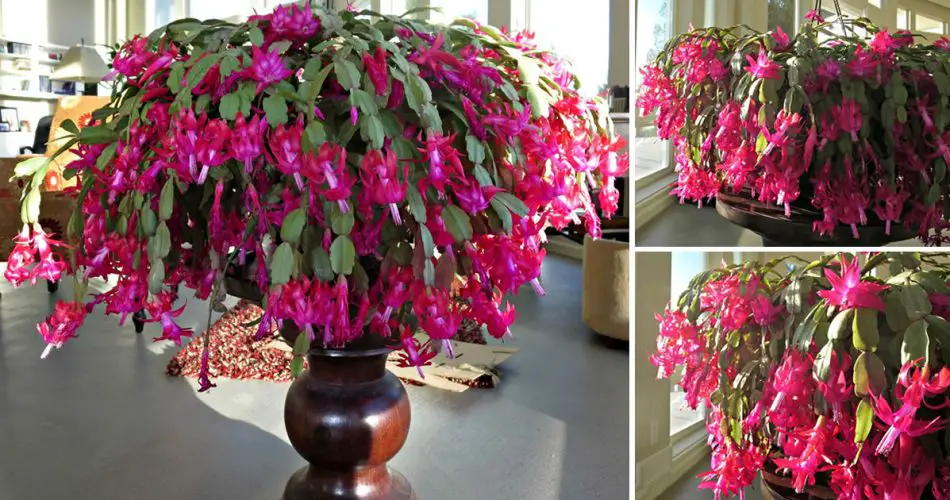Introduction: The Christmas cactus, also known as the Easter cactus (Schlumbergera bridgessii), stands as a spectacular winter-blooming houseplant that adds a burst of color to almost any indoor space. Not only is this popular plant easy to care for, but it can also be easily propagated. By following some simple tricks, you can ensure continuous and vibrant blooms throughout the year.
Propagation for Year-Round Blooms: Propagating the Christmas cactus involves cutting a small “Y”-shaped segment from the stem tips, ensuring it’s taken from a healthy part of the plant.
- Planting the Cut Segment:
- Plant the cut segment by inserting approximately a quarter of its length into slightly sandy soil.
- Ensure uniform soil moisture and place it in a well-lit area, avoiding direct sunlight.
- Root Generation for New Plants:
- To stimulate root growth for new plants, cut shoots from the tips, at the second joint of each plant.
- After a few weeks, once signs of growth appear, transfer it to another pot with a mix of soil, compost, and sand.
Caring for the Christmas Cactus to Promote Blooms: While the Christmas cactus is undemanding, minor adjustments can ensure a healthy and abundant bloom.
- Optimal Lighting Conditions:
- Adaptable to low light, placing the cactus in brighter environments encourages more blooms.
- Protect from direct sunlight to avoid leaf burn; find a well-lit, protected corner for optimal growth.
- Crucial Watering Habits:
- Regular and ample watering is crucial during spring and summer to keep the soil consistently moist without waterlogging.
- Water frequently but allow the soil to dry slightly between watering; excess water can lead to root rot.
- Temperature and Humidity Preferences:
- Maintain temperatures between 15°C and 21°C for optimal growth.
- Moderate humidity is preferred; placing a tray of water-filled pebbles under the pot can enhance moisture levels.
- Post-Blooming Dormancy Cycle:
- After the fall bloom, let the plant enter its dormancy cycle by reducing watering frequency and light exposure.
- Ensure the plant receives 12-14 hours of darkness, with temperatures between 10°C and 12°C, away from heat sources and drafts.
By following these simple guidelines, your Christmas cactus can surprise you with frequent and unexpected flowering cycles, creating a year-round display of festive beauty.



